Up Next
Brooklyn Artist Aisling Hamrogue’s Horror-Inspired Paintings Both Terrify and Delight
Her solo show "Libido Dominandi" is on view at Rift Contemporary in Los Angeles through December 31.
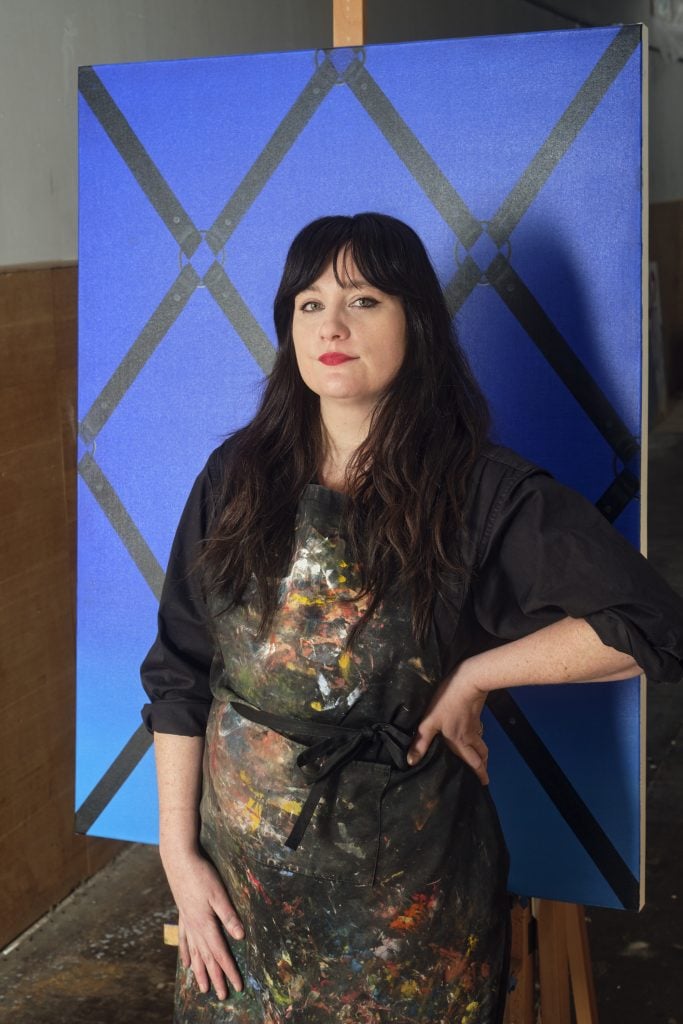
Her solo show "Libido Dominandi" is on view at Rift Contemporary in Los Angeles through December 31.

Katie White

Brooklyn-based artist Aisling Hamrogue’s paintings appear as flashes in the mind’s eye, like a memory or a moment of déjà vu, or a scene in a horror film that flickers across the screen before dissolving just as quickly.
In Roman (2023), a black dog lunges out from the darkness of the canvas, baring white fangs, his eyes filled with beastly, blind ferocity. The dog’s red mouth centers the canvas, a portal, both alluring and frightening, in which we might be devoured. “Roman” is painted below the dog in white lettering, an effect reminiscent of a movie poster or a pulp fiction book cover.
In another recent painting, Blank Line (2023), we see a woman’s stockinged legs from behind. Patent leather pumps are on her feet and her gloved hands hold a pool cue, aimed down below at a few pool balls haphazardly strewn. A blue-lit city appears in the distance. The painting is sexy, in a noir, Raymond Chandler sort of way, hinting at a lurking danger, but also voyeuristic, and even playfully theatrical.
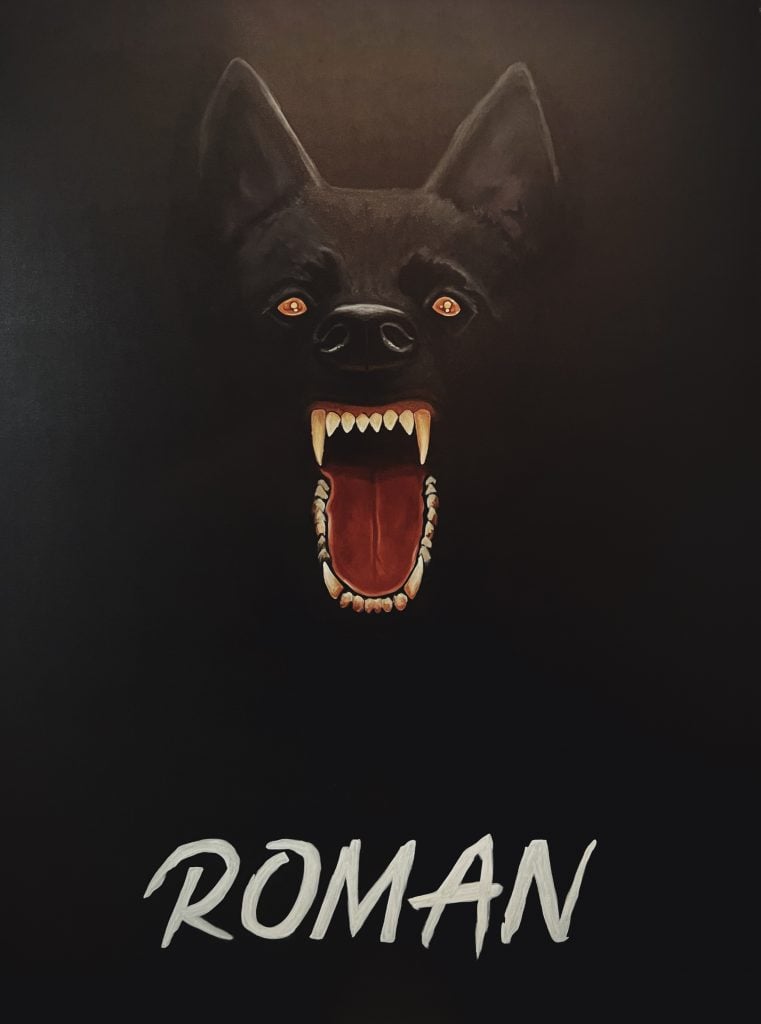
Aisling Hamrogue, Roman (2023). Courtesy of the artist.
Horror film aesthetics, Hamrogue admits, have fascinated her since adolescence, making visual many charged and contradictory impulses in our culture. She can list off a litany of films that have inspired her—Fatal Attraction, Candyman, Silence of the Lambs, and dozens of others. “I remember as a young teenager going to the cinema and seeing posters for horror films. I was raised in a strict Catholic home, and I knew I was forbidden to watch these types of films. The images were so powerful and provocative for me. I knew that these images alluded to violent and sexual themes, and I was drawn to their dark taboo aesthetic,” Hamrogue told me.
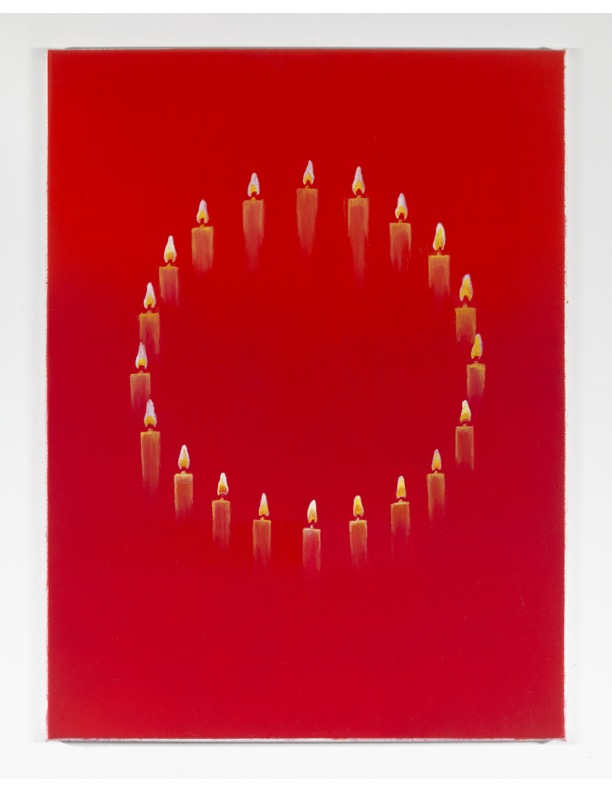
Aisling Hamrogue, Canto XX (2021), Courtesy of the artist.
On canvas, these cinematic horror tropes feel surprisingly unexpected, rather than well-worn. “I find this imagery compelling inside of a painting because modern horror imagery resides outside of mainstream art and carries a camp quality which amplifies its charge within the work,” she explained. “I’m interested in how references to sub-culture and genre within a painting can signify larger concerns of identity and class.”
Los Angeles, the land of Hollywood glitz and glamour, sunshine and noir, seems to in some way haunt these images, which make Hamrogue’s current exhibition, “Libido Dominandi,” at Rift Contemporary particularly noteworthy. Featuring a dozen canvases, the exhibition, which is titled after the Latin phrase “the lust for domination,” draws out the sublimated impulses horror movies often hint at. Hamrogue’s painting of the same title is a close-up view of a pipe organ, its gleaming silver cylinders a vision once mechanical and phallic.
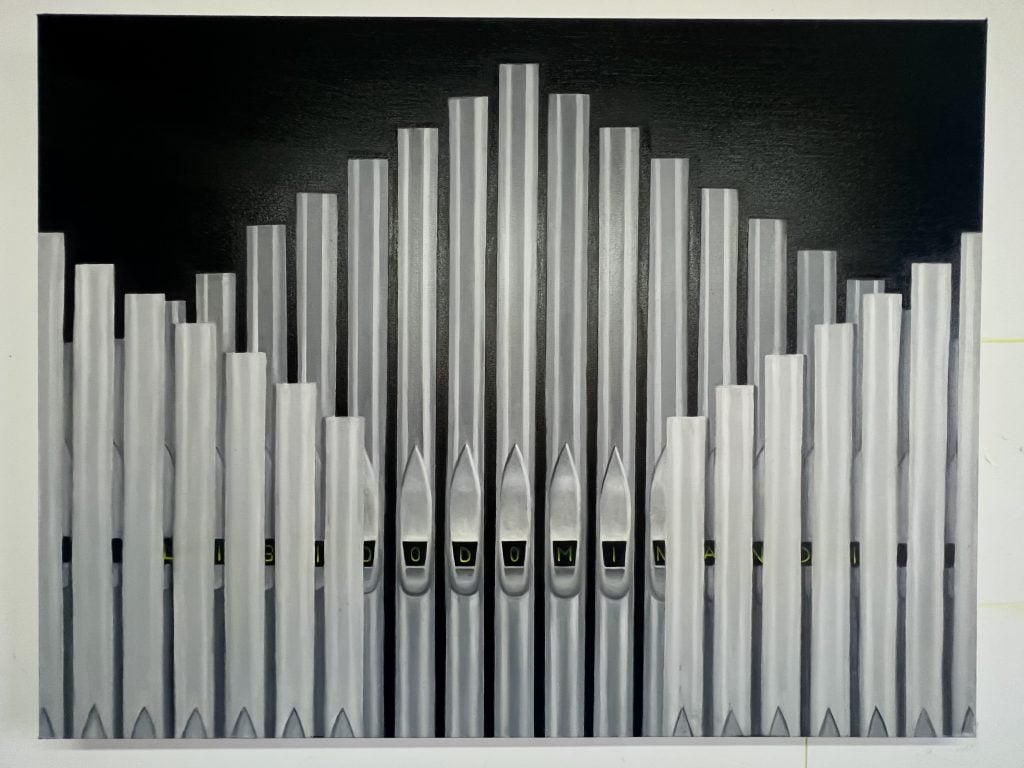
Aisling Hamrogue, Libido Dominandi (2023). Courtesy of the artist.
“[Libido Dominandi] was first explored by St. Augustine in his text The City of God in the early 5th century,” the artist explained. “I am interested in what personal and erotic freedom means in a highly sexualized secular culture.” In an interview with the artist Liz Glaessner, in conjunction with the exhibition’s opening, Hamrogue said: “St. Augustine deems erotic power as ultimately a weakness because it creates a dependency on our passions. In our contemporary society, we are encouraged to explore our lust as a vehicle of freedom… I am drawn to this concept because it invokes the contradictions in the pursuit of freedom and desire.”
Herein lies the pleasure of Hamrogue’s painting—their paradoxes. The imagery in her works is often deceptively simple: candles burning in a circle against a red backdrop, three concentric circles of chains. But the effect is much more complex, feeling at once familiar and otherworldly, Catholic and occult, erotic and violent, serenely still and terrifyingly dynamic.
“I’m interested in paradoxical relations. Imagery that plays with death and pleasure though seemingly oppositional, are interconnected on a libidinal and subconscious plane,” she added when I asked about these tensions. “I am aware that horror films are devoted in large part to the total destruction of the female form. But upon deeper inspection, these films underscore powerful drives and taboos inherent to human sexuality.”
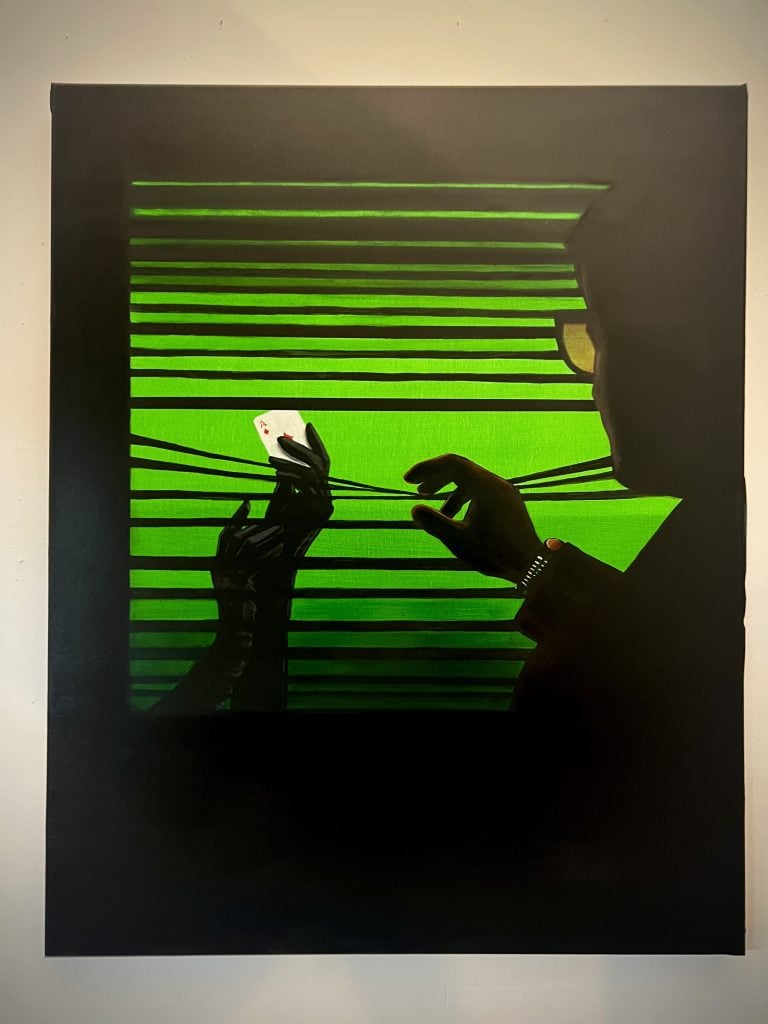
Aisling Hamrogue, Ace’s Window. Courtesy of the artist.
In one sense, these paintings do seem to, albeit poetically, point to a culture of misogynistic sexualization in even our storytelling and entertainment; in fact, many of her paintings hint at real-life experiences. “In my piece Ace’s Window, a man is peering through Venetian blinds at a woman’s gloved hand holding an ace of diamonds. This painting was inspired by an experience I had as a teenager when I discovered that there was a peeping tom watching me from across the road with binoculars,” she said. “I find horror to be a great foil for talking about the relationship between erotic and death drives in American culture.”
Hamrogue’s paintings, also, in other ways, ask questions of painting’s relationship to contemporary culture, more broadly. Looking at her paintings might remind viewers of other artists from a dizzying span of history: the Italian Baroque paintings Caravaggio and Artemesia Gentileschi for their sense of theater and violence; Surrealist women like Méret Oppenheim and Remedios Varos for the occult leanings, but also, in their campness; American artists like Ed Ruscha and Christina Ramberg. The influences are not anything direct but metabolized—and always waiting, watching for whatever’s next. Seen together, her paintings build off one another in this effect, hinting at a voracious, encompassing unfolding story we are all part of and may already know the ending to.
More Trending Stories:
Art Dealers Christina and Emmanuel Di Donna on Their Special Holiday Rituals
Stefanie Heinze Paints Richly Ambiguous Worlds. Collectors Are Obsessed
Inspector Schachter Uncovers Allegations Regarding the Latest Art World Scandal—And It’s a Doozy
Archaeologists Call Foul on the Purported Discovery of a 27,000-Year-Old Pyramid
The Sprawling Legal Dispute Between Yves Bouvier and Dmitry Rybolovlev Is Finally Over